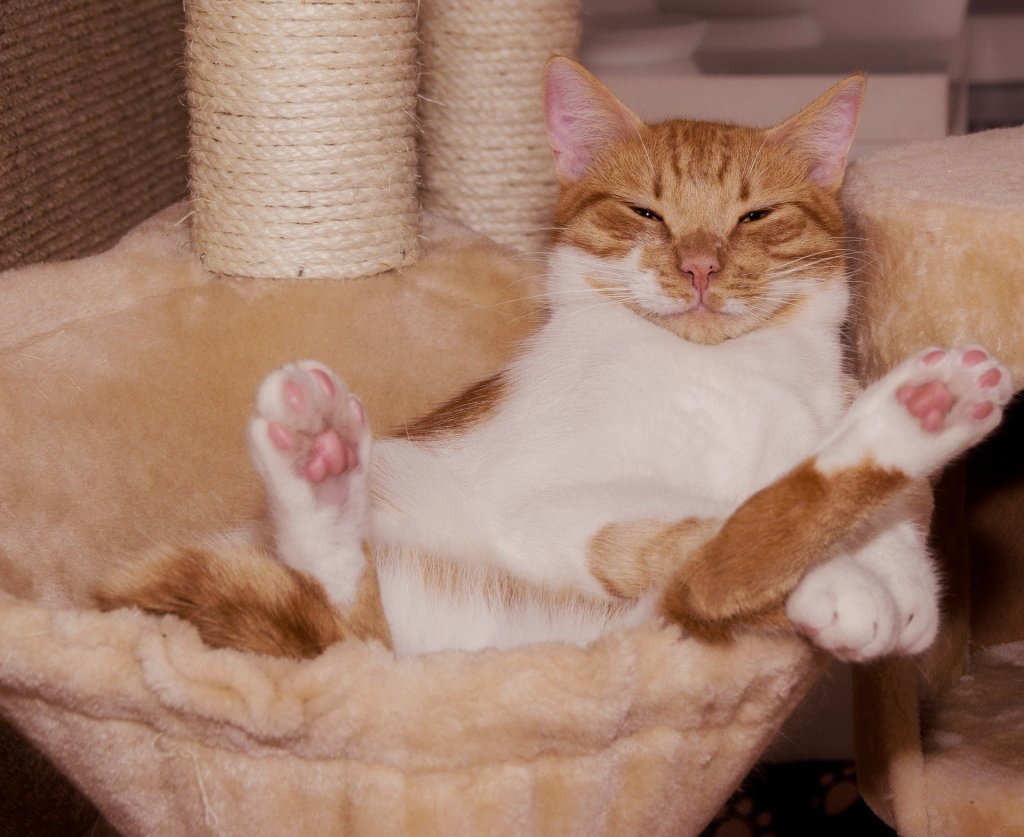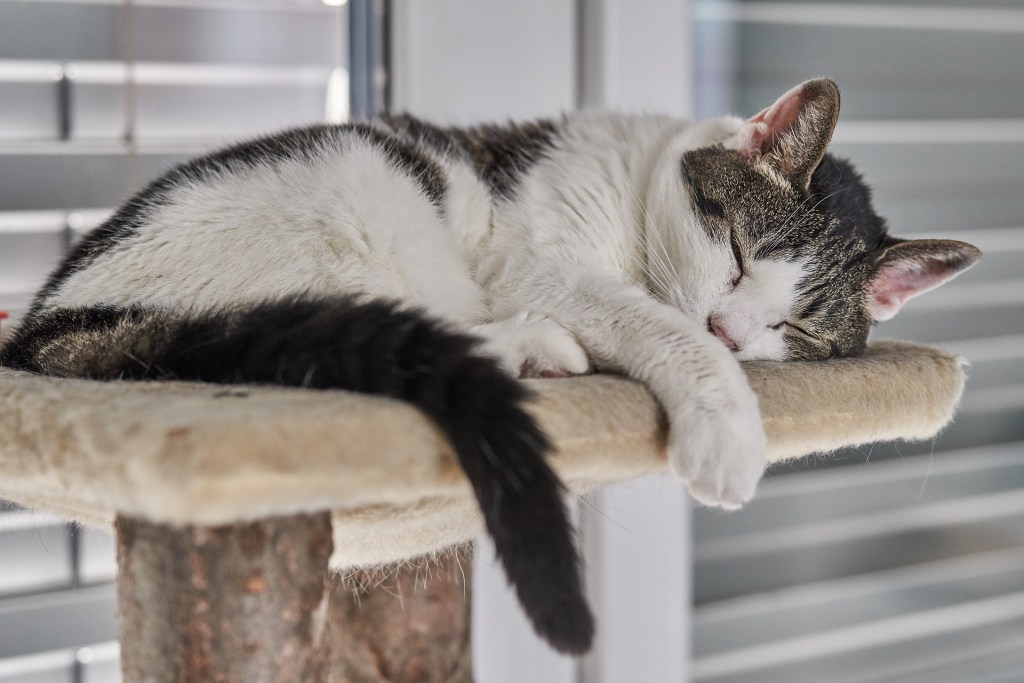Cat trees provide your cat with valuable exercise and entertainment. They can help to satisfy your cat’s instinctual needs to be up high, to climb, and to sharpen his claws. They give your cat a chance to exercise and play, which is extremely important for indoor-only cats. Cat trees with perches and platforms even double as sleeping spots for your cat, helping him to feel secure. But cat trees can be expensive, which is why we’ve included the following DIY cat tree options. When you understand how to build a cat tree, you can custom-build a special tree just for your cat and even save money in the process.

Build a traditional cat tree
Building a traditional cat tree will require some basic carpentry skills, but it doesn’t have to be a super overwhelming or detailed project. You’ll need some simple materials like plywood, a 2″ x 4″ piece of lumber, some carpet, rope, and wood glue. You’ll cut the lumber to the height you want and mount it to the plywood. Then, you’ll wrap and glue the rope around the lumber to make posts that are easy for your cat to climb. You’ll also need to glue carpeting to the plywood base and platform, creating areas for your cat to sit and nap.
To complete this project, you’ll need some tools including a hammer and a circular saw. One of the perks of this project is that the cat tree has a pretty simple design, so you can modify it to make it larger or smaller. You can make the cat tree as complex as you’d like and can also add special touches like hanging toys and extra platforms and cushions.
This video provides some great instructions that can guide you through the process:
Build a cat tree from a real tree
A cat tree doesn’t necessarily need to rely on fabric and rope to make it enticing. Instead, you can make a cat tree out of old tree limbs that you find.
For this project, you’ll need a large piece of plywood to act as your base. Then, take a trip out to the woods to unearth some limbs. The limbs should be large and strong enough to easily support your cat’s weight. Inspect for areas of rot or cracks, and avoid limbs that are weakened by these flaws.
It’s important to make sure that any limbs you bring home are free of bugs. Dry them out thoroughly in a garage or shed before bringing them into your house.
Mount those limbs tightly to your base with long screws. Then, you can add platforms to the limbs or hang toys from them to encourage your cat to climb and play with the limbs themselves.

Build a cactus cat tree
You can also build a cat tree that resembles a cactus fairly easily. You’ll need a plywood base, as well as several 2″ x 4″ wood pieces. Nail or screw the pieces together to resemble a basic cactus shape, and attach that to your base with long screws.
Next, wrap green sisal rope around the cactus shape and glue it down with wood glue as you go. Wrap the rope tightly, so you create a surface that’s enticing to your cat and perfect for scratching his claws.
Strategies to save money on your cat tree
Building a cat tree can help you to save money over the cost of a store-bought tree, but you’ll still need to purchase supplies. To make this project really cost-effective, ask your local hardware store if they have any lumber that’s bent or full of wood knots that they would be willing to sell at a discount. You can use these pieces as poles for your cat to play with, and they don’t have to be perfectly straight.
If you plan on using carpeting, ask a flooring store if they have any scraps that they’ll be discarding. You may be able to get these scraps cheaply, or perhaps even for free.
DIY is easier than you think
You could put a lot of effort into making a cat tree, only to have your cat ignore it. If that happens, don’t panic. Many cats will take days, weeks, or even months before they warm up to a new piece of furniture, and the cat tree that you’ve made might have different smells on it that your cat is uncertain about. To encourage your cat to use the tree, consider rubbing it with catnip and adding some of his favorite toys to it. You can also feed your cat near the tree or on the base to get him used to it and to help it start to smell more familiar. With a little time, chances are your cat will think the tree is pretty awesome and will start to play with it.
Editors' Recommendations
- Can a cat’s tail really fall off?
- When can kittens eat dry food? The lowdown on what you should feed them
- Why you should feel honored if your cat sleeps at your feet
- Do you have a loaf cat? Why cats curl up into adorable little buns
- Why does my cat meow at night? The answer may shock you



